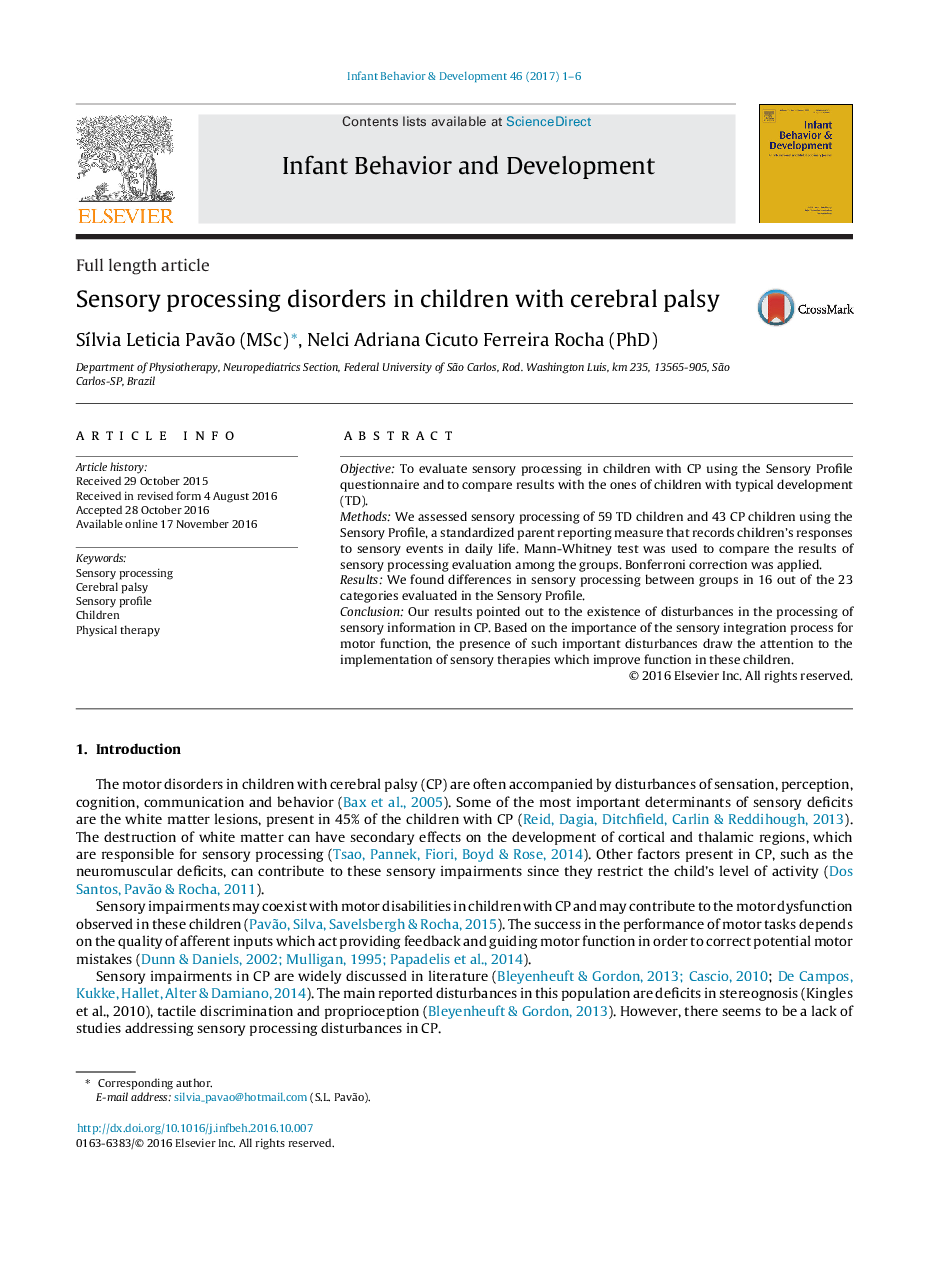| Article ID | Journal | Published Year | Pages | File Type |
|---|---|---|---|---|
| 5039780 | Infant Behavior and Development | 2017 | 6 Pages |
â¢Children with cerebral palsy present important sensory processing constraints.â¢Sensory processing dysfunction interferes with motor and functional abilities.â¢Specific sensory stimuli has to be added in therapy of these children.
ObjectiveTo evaluate sensory processing in children with CP using the Sensory Profile questionnaire and to compare results with the ones of children with typical development (TD).MethodsWe assessed sensory processing of 59 TD children and 43 CP children using the Sensory Profile, a standardized parent reporting measure that records children's responses to sensory events in daily life. Mann-Whitney test was used to compare the results of sensory processing evaluation among the groups. Bonferroni correction was applied.ResultsWe found differences in sensory processing between groups in 16 out of the 23 categories evaluated in the Sensory Profile.ConclusionOur results pointed out to the existence of disturbances in the processing of sensory information in CP. Based on the importance of the sensory integration process for motor function, the presence of such important disturbances draw the attention to the implementation of sensory therapies which improve function in these children.
